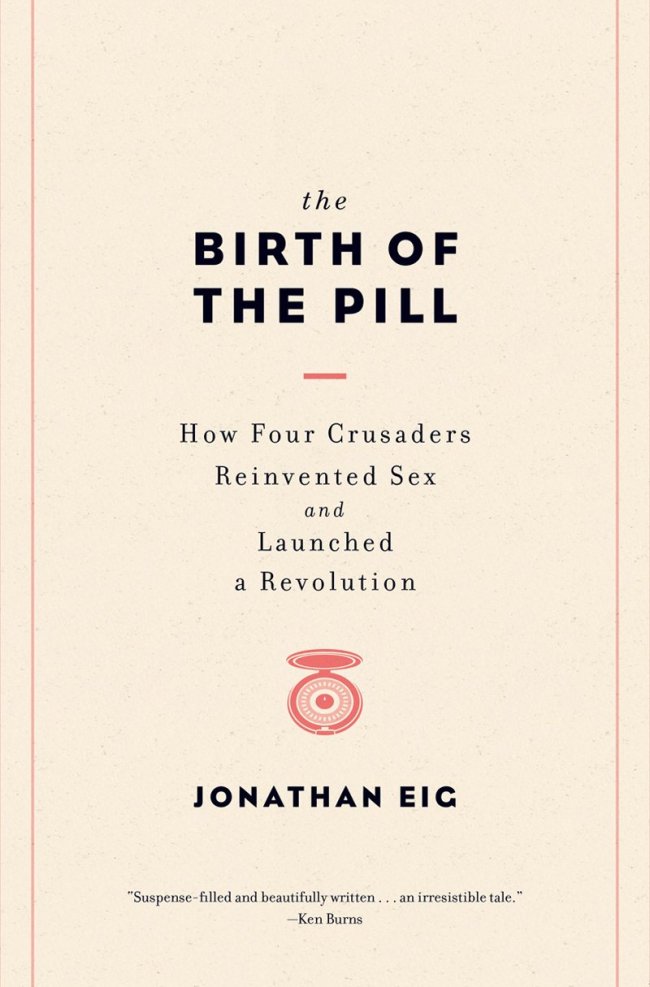
Chicago journalist Jonathan Eig got the idea for his new book, “The Birth of the Pill,” from a sermon his rabbi gave many years ago.
“He was claiming the (birth control) pill was a bigger deal than the airplane, than the A-bomb,” Eig said of Rabbi Elliot Cosgrove, then of the Anshe Emet Synagogue on Chicago’s North Side. “At first, I thought he was crazy. Then I came to think maybe he was right.”
Eig wondered how the history of something so important could be so quickly forgotten, especially in Chicago, the city arguably most responsible for its existence. Almost all of the money for the development of the birth control pill came from Chicago’s McCormick Family.
In 1904, Katharine Dexter McCormick, who grew up in Chicago and was the first woman to graduate from MIT with a degree in science (biology), married Stanley McCormick, the youngest son of Cyrus McCormick.
Cyrus McCormick had in 1834 patented the mechanical reaper, a machine that automatically cut, threshed and bundled grain and established a fortune for his family. But within a few years of their marriage, Stanley, who was in his early 30s and the comptroller for the family’s International Harvester business, was diagnosed with schizophrenia.
“When he died (in 1947 in his 70s), she came into all his money,” about $373 million in today’s dollars, although not without a legal fight, Eig said. “And she wanted to spend it on a mission. Her first choice was to fight for reproductive rights. So she immediately got in touch with (activist) Margaret Sanger and asked what’s the best use of this money?”
Katharine McCormick bought into Sanger’s vision of a pill that could prevent pregnancy and be as easy to ingest as aspirin. Eig said McCormick, meanwhile, knew of scientist Gregory Pincus through his hormone research on schizophrenia and suggested Sanger get in touch with him. McCormick’s contributions to everything from new laboratory buildings for Pincus to travel expenses related to research would reach into the millions.
“She was a one-woman accounting office,” Eig said.
By this time, Pincus had been fired from Harvard for experimenting with in vitro fertilization and boasting about it in the press. While trying to get his career back in order, he received a few grants from G.D. Searle & Co., the pharma company then headquartered in Skokie. (It is now part of Pfizer.)
“And he fails miserably” on a big Searle project, Eig said. “Searle is really fed up with him, and he goes to Chicago to try to salvage the relationship. ... And he’s telling the director of research that he’s working on this cure for baldness, and he off-handedly, casually mentions that he’s also working on this birth control pill for Margaret Sanger. Searle’s not interested. They’re more interested in the baldness.”
Ehh. Men.
Pincus, however, is able to rely on Searle to supply him with the synthetic hormones one of its chemists had created by accident and that Pincus needed to continue his birth control experiments. As Pincus’ work advances, Searle begins to invest in the pill.
“They don’t have to take much risk or build any laboratories,” Eig said, “because they have the benefit of Katharine funding a large operation for this.”
Pincus conducted his first experiments on the pill in 1951 with FDA approval coming within a decade. McCormick, then near 90, goes into a drugstore with a prescription from her doctor and picks up a bottle to celebrate, Eig said.
The sermon “wasn’t on the pill,” clarifies Cosgrove, Eig’s former rabbi, who now ministers at New York’s Park Avenue Synagogue. “It was on the ability of people to redefine the terms of their existence. I think I probably framed it as an example of one of the most transformative pivots of the past century, a flash point that marks our lives with a before and an after.”
By Melissa Harris
(Chicago Tribune)
(MCT Information Services)








